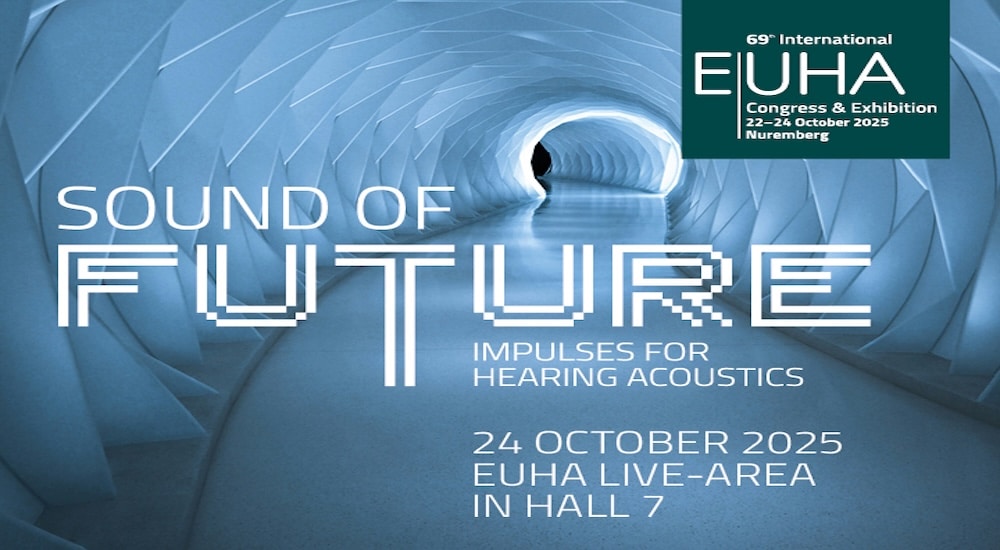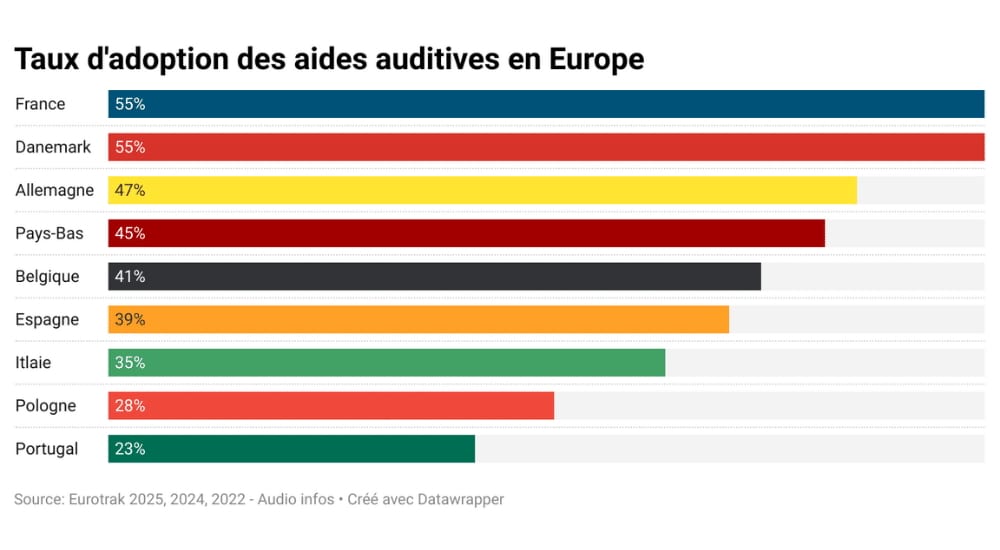The next generation of assistive listening is AURACAST. But what, when, where, how..?
The new Bluetooth technology that can enable so much will arrive gradually but have an increasing impact on communication.
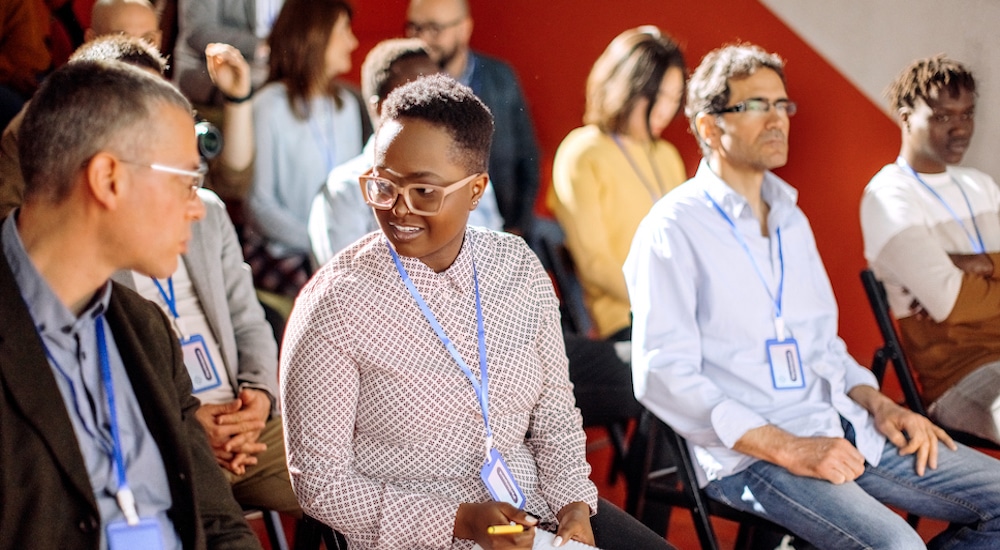
By making its latest hearing aid product Auracast-ready, GN got in early…very early!
While the basic technology is ready to go, the finer details are still under discussion between industry outfits that want to make use of the audio excellence Auracast appears to guarantee and the Bluetooth Special Interest Group (SIG), a network of member organisations that are the caretakers and innovators of Bluetooth technology.
The members of the SIG are currently shaping the future of Bluetooth technology. In other words, the Auracast shape is not yet fully determined. Indeed, GN’s early engagement with the SIG has given this hearing aid manufacturer some powerful input into how Auracast will work, and to some extent where. The question of when is evidently a matter of a transition taking place: the hearing aid and consumer electronics industry building Auracast into its futures, and society investing in the Auracast infrastructure in venues and spaces. And we could easily be talking about ten or more years here.
To pull in answers on Auracast, it is therefore entirely appropriate to dip into a variety of waters, but certainly to eavesdrop on a vibrant and very useful recent round-table Q&A discussion led by GN’s Chief Audiology Officer Laurel Christensen, and featuring experts Chuck Sabin, Senior Director, Market Development at Bluetooth SIG, and Thomas Olsgaard, Principal Engineer GN Group. Their answers pepper the following responses to a number of key doubts on this streaming and assistive listening technology.

© Getty Images/iStockphoto – Mihaela Rosu. A period of transition means Auracast peacefully coexisting with other listening and streaming technologies, including Bluetooth Classic and LE.
WILL AURACAST REPLACE TELECOILS IN PUBLIC PLACES?
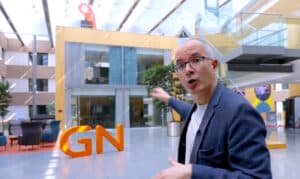
©GN Miguel Angel Aranda De Toro is in the right space.
Miguel Angel Aranda De Toro, Ph.D. Senior Product Marketing Manager at GN:
Eventually, yes, but it will not happen soon. Auracast is an emerging technology, and right now we are in a transition period where all technologies will coexist for some time, but there are many reasons why Auracast is the much better technology. To use a telecoil in a place like this (see photo), you would need a cable all around the area of interest. The cable generates an electromagnetic field transmitting wireless audio to anyone using a telecoil. As you can imagine, the bigger the place the more complex and more expensive the installation. Auracast, on the other hand, is way simpler. A small transmitter is all we need, and the sound quality is much better than telecoils without interference. This can motivate more and more public places to install the new technology.
Chuck Sabin, Senior Director, Market Development at Bluetooth Special Interest Group: They’re not going to tear out loop systems and put in Auracast. I want to make sure it’s very clear to all audiences that those technologies can coexist. Auracast plus the other technologies can coexist in a single system, in a single location, without interfering on each other.
What a hearing aid manufacturer does in terms of including telecoils or not in hearing aids is part of their design decision. But you shouldn’t just suddenly start ripping things out while you’re in a transition period; you should be adopting both technologies. And we see this in Bluetooth all the time where we’ve got the classic radio, we’ve got the Bluetooth Low Energy radio, and you see in a lot of core devices that they’ll support both of those radios while we continue to be in a transition period. There’s going to be classic audio and there’s going to be LE audio, and you’re gonna see a lot of devices supporting both audio infrastructures.
We do believe that Auracast is the next generation of assistive listening.
RANGE – HOW DOES AURACAST WORK IN LARGER AREAS?

© Bluetooth SIG
Thomas Olsgaard, Principal Engineer GN Group: You would have a range equalling minimum 20 metres. So, in a sports bar you would have a nice coverage. In a large venue, you will have several transmitters, but you will just connect to the one that is closest to you. So there will be many transmitters transmitting exactly the same. This is invisible to you. You just connect to the one that appears in your app, and then you’re good to go. What happens behind the scene is that the app finds the one with the best signal, so you are sure that you don’t lose connection. So it’s not like with the loop system where you have to find the right spot in the loop to be sure you have a good sound quality.
Chuck Sabin: The output power that is used to transmit the signal for an Auracast broadcast is oftentimes far greater than what people are used to, which is their phone connecting to their smart watch or their earbuds or something else, which transmits in terms of output power for the audio at a much smaller rate; let’s say it is +2 dBm or +3 dBm or something like that. Your Auracast transmitters will be transmitting closer to +10 dBm and, depending on regulatory needs or regulatory issues within certain countries, could be up to +20 DBM. They are also, especially in public spaces, going to be ceiling mounted, not down low. So, just based on the way that the transmitter is going to be designed, its output power levels, the fact that it’s going to be mounted high, you are going to get much stronger coverage opportunities with these devices.

© Bluetooth SIG Chuck Sabin: “We do believe that Auracast is the next generation of assistive listening.”
AURACAST WILL PROVIDE AN AUDIO EXPERIENCE FOR EVERYONE, NOT JUST HEARING AID USERS. BUT WILL EVERYONE REALLY USE IT, OR JUST SOME PEOPLE?

© GN Thomas Olsgaard, Principal Engineer GN
Thomas Olsgaard: People are different. Our users are different people with hearing impairments that are different. Some would say ‘this is not a technology for me, I just want to have my hearing aids and that’s it, I’m happy, I’m satisfied’. But I don’t see any limitations. If you have hearing aids supporting this, anyone can just tap into it.
CHANGE MEANS ANXIETY – DO YOU NEED A NEW HEARING AID?
Laurel Christensen: I think most people with hearing aids and implants are going to ask that question. You would eventually need a new hearing aid to do Low Energy audio […] and I think that is one of the points that is important to be made by hearing healthcare professionals, because if you’re going to invest today in hearing aids that you’re going to keep five or six years, you need to have a Low Energy audio hearing aid now or you will be kind of left behind as all of this starts to come online.

© GN Laurel Christensen, CN Hearing’s Chief Audiology Officer.
Chuck Sabin: I’ve heard people that have hearing loss say ‘OK, well now LE Audio’s out there, I have to throw my hearing aids away and everything has to be thrown away because it’s not going to work with the new phones. I want to make sure it’s very clear that, just because LE audio is coming out, this does not mean the functionality and the capabilities that you have today are going to go away. So what you have today will continue to operate as it is today because the things that you might connect to a phone or something else are not suddenly just going to stop working or stop having the capability in that device. But as Laurel mentions, as you start looking towards the future, there may be new capabilities that are becoming available in the technology that may not be able to work with your existing hearing aid or cochlear implant.
MIGHT iPhone USERS HAVE TO GIVE UP CERTAIN FEATURES OF THE MFI (Made for iPhone) PROGRAM?
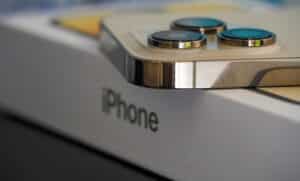
© Getty Images – Stockfoo
Thomas Olsgaard: We are in this transition phase, so the next year you actually have support for MFI, ASHA (Audio Streaming for Hearing Aids), LE audio, Auracats, and telecoil. We need that because we don’t know what people have. What we’re working with is further developing these things, and unless, let’s say Apple have a right patent on something, then of course we cannot take that out of the Apple domain and use it in Android or LE audio or whatever. But I think a lot more will be devised in this domain on how to use things and we will build on what already exists. To my knowledge I don’t think either Apple or Android or any of the other companies will prevent that happening. They actually want to support the hearing impact.
AURACAST HAS MANY ADVANTAGES OVER CLASSIC BLUETOOTH, INCLUDING SHARING AUDIO. WHAT ARE SOME ADVANTAGES?

© Getty Images – ProfessionalStudioImages Sharing broadcast audio from the same channel with the family – on any devices such as headphones – will be easy with Auracast.
Xavier Temmos, general manager of GN Hearing France: “You can use streaming from a television all day long without affecting the battery life, which remains 30 hours with Nexia devices,” explains Xavier Temmos, general manager of GN in France. “Another advantage is being able to share the audio with the rest of the family.”For example, when the person with hearing aids is watching a film, loved ones can connect their headphones or speakers to the same sound channel and thus have the same experience.”
No latency. With hearing aids connected via classic Bluetooth, there could be latency between the sound and the image. “This is now complete because Auracast guarantees perfect synchronisation, which is very useful for patients who need lip reading to complement sound,” says Temmos.
EXACTLY HOW PEOPLE WILL CONNECT TO AURACAST AUDIO IN ANY SPACE IS STILL BEING DETERMINED. WHAT WILL THE MECHANISMS BE, HOW SIMPLE IS THE PROCESS GOING TO BE?
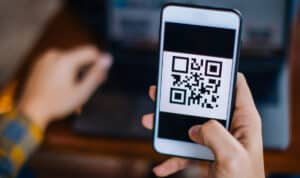
© agrobacter-iStock QR code scanning is being looked at as a source-to-device facilitator in Auracast streaming.
Chuck Sabin: Soon you’ll be able to scan for audio access points in the same way you do wi-fi access points. And that really goes through an assistant function of some type. We talk about the smartphone, but really anything can be an assistant. It can be your watch, it can be a phone,… it could be part of the charging case. We’ve seen charging cases with screens on them, and many of those actually are Bluetooth devices for pairing and managing devices. And there’s the concept of QR codes.
Thomas Olsgaard: No matter how we solve it, it has to be extremely simple. So what you can expect is that when you look in the app you either have a button, or something like that, where you get the list. And the list is not, like random as you see it from the wi.fi. Here, it will be structured showing what is closest and for sure has a good quality, so within range, even though you move around a little bit, you don’t lose the connection. We will also go into the QR codes. We have some pretty good ideas about this. I can’t go into that today but the QR code can be located on the source you would like to listen to or if you have several languages, how do you pick the right one and so forth. So, something that anyone can do without being a nerd.
YOU ARE AT A CONFERENCE. EVERYBODY IS LISTENING TO AN AURACAST BROADCAST ON THEIR DEVICES. BUT IS A TRANSPARENCY MODE POSSIBLE SO YOU CAN COMMENT TO THE PERSON SITTING NEXT TO YOU?
Thomas Olsgaard on using an assistant to mix between Auracast stream and ambient noise: If you have the new Nexia hearing aid you would, in your app, tune what the volume is going to be on what you’re streaming. So you find the right level and then you also find the right level on the ambient sound. You can mute too. So in this case, you can have whatever you like, you can mix as you like.
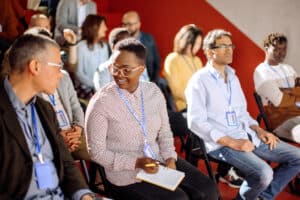
© Pekic – iStock Conference situations could require your Auracast assistant to enable a mix of broadcast stream and ambient sound.
Laurel Christensen: In a lot of these situations you’re going to need an assistant in the middle that allows you to select your stream and turn it on in your earbuds or your hearing aid and and so on.
WHAT IF YOU ARE A MANUFACTURER INTERESTED IN DEVELOPING SUPPORT FOR AURACAST IN YOUR PRODUCT?
Information on building, qualifying, and branding your product is available at the Bluetooth website, as well as a downloadable guide that outlines how to build an Auracast application for existing smartphones, and the key design requirements to enable Auracast receivers to support legacy devices.
